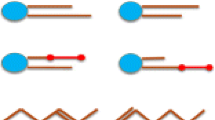Abstract
A simple method for transfer of lipids—including phospholipids, glycolipids, and neutral lipids—from a high performance thin layer chromatography (HPTLC) plate to a polyvinylidene difluoride (PVDF) membrane, TLC-Blot (Far-Eastern Blot), and its biochemical applications are presented. This chapter presents the conventional procedures for separating lipid from tissue samples, cultured cells, and serum and the subsequent development of TLC. Individual lipids separated on an HPTLC plate can be transferred to the PVDF membrane quantitatively and also isolated from the lipid-blotted membrane by a one-step purification procedure. Immunodetection with monoclonal antibodies and treatment with lipid-metabolizing enzymes on the lipid-blotted membrane are possible. The method for identification of individual lipids transferred on the PVDF membrane using matrix-assisted laser desorption/ionization quadrupole ion trap time-of-flight mass spectrometry (TLC-Blot/MALDI-TOF MS) is shown as a functional lipidomics application.
Access this chapter
Tax calculation will be finalised at checkout
Purchases are for personal use only
Similar content being viewed by others
References
Norris PC, Gosselin D, Reichart D, Glass CK, Dennis EA (2014) Phospholipase A2 regulates eicosanoid class switching during inflammasome activation. Proc Natl Acad Sci U S A 111:12746–12751
Liu Y, Su Y, Wang X (2013) Phosphatidic acid-mediated signaling. Adv Exp Med Biol 991:159–176
Maeda-Sano K, Gotoh M, Morohoshi T, Someya T, Murofushi H, Murakami-Murofushi K (2014) Cyclic phosphatidic acid and lysophosphatidic acid induce hyaluronic acid synthesis via CREB transcription factor regulation in human skin fibroblasts. Biochim Biophys Acta 1841:1256–1263
Simons K, Ehehalt R (2002) Cholesterol, lipid rafts, and disease. J Clin Invest 110:597–603
Brown DA (2006) Lipid rafts, detergent-resistant membranes, and raft targeting signals. Physiology 21:430–439
Hanzal-Bayer ME, Hancock JF (2007) Lipid rafts and membrane traffic. FEBS Lett 581:2098–2104
Horejsi V, Hrdinka M (2014) Membrane microdomains in immunoreceptor signaling. FEBS Lett 588:2392–2397
Towbin H, Schoenenberger C, Ball R, Braun DG, Rosenfelder G (1984) Glycosphingolipid-blotting: an immunological detection procedure after separation by thin layer chromatography. J Immunol Methods 72:471–479
Taki T, Handa S, Ishikawa D (1994) Blotting of glycolipids and phospholipids from a high-performance thin-layer chromatogram to a polyvinylidene difluoride membrane. Anal Biochem 221:312–316
Taki T, Kasama T, Handa S, Ishikawa D (1994) A simple and quantitative purification of glycosphingolipids and phospholipids by thin-layer chromatography blotting. Anal Biochem 223:232–238
Taki T, Ishikawa D, Handa S, Kasama T (1995) Direct mass spectrometric analysis of glycosphingolipid transferred to a polyvinylidene difluoride membrane by thin-layer chromatography blotting. Anal Biochem 225:24–27
Kasama T, Hisano Y, Nakajima M, Handa S, Taki T (1996) Microscale analysis of glycosphingolipids by TLC blotting/secondary ion mass spectrometry: a novel blood group A-active glycosphingolipid and changes in glycosphingolipid expression in rat mammary tumor cells with different metastatic potentials. Glycoconjugate J 13:461–469
Isobe T, Naiki M, Handa S, Taki T (1996) A simple assay method for bacterial binding to glycosphingolipids on a polyvinylidene difluoride membrane after thin-layer chromatography blotting and in situ mass spectrometric analysis of the ligands. Anal Biochem 236:35–40
Taki T, Ishikawa D (1997) TLC blotting: application to microscale analysis of lipids and as a new approach to lipid-protein interaction. Anal Biochem 251:135–143
Valdes-Gonzalez T, Goto-Inoue N, Hayasaka T, Ishiyama T, Setou M, Taki T (2011) Imaging technology of complex lipid molecular species by a combination of TLC-Blot and MALDI-TOF – special reference to human brain ganglioside molecular species. J Glycom Lipidom 1:104
Taki T (2013) Bio-recognition and functional lipidomics by glycosphingolipids transfer technology. Proc Jpn Acad Sci B 89:302–320
Acknowledgments
The brain tissues were obtained from The Netherland Brain Bank (NBB) (The Netherlands). All samples were anonymous and were obtained under conditions of informed consent according to the ethical guidelines of the NBB. I deeply appreciate the cooperation of Dr. Rivka Ravid and staff, who were involved in providing the human samples from NBB.
Author information
Authors and Affiliations
Corresponding author
Editor information
Editors and Affiliations
Rights and permissions
Copyright information
© 2015 Springer Science+Business Media New York
About this protocol
Cite this protocol
Taki, T. (2015). TLC-Blot (Far-Eastern Blot) and Its Application to Functional Lipidomics. In: Kurien, B., Scofield, R. (eds) Detection of Blotted Proteins. Methods in Molecular Biology, vol 1314. Humana Press, New York, NY. https://doi.org/10.1007/978-1-4939-2718-0_24
Download citation
DOI: https://doi.org/10.1007/978-1-4939-2718-0_24
Publisher Name: Humana Press, New York, NY
Print ISBN: 978-1-4939-2717-3
Online ISBN: 978-1-4939-2718-0
eBook Packages: Springer Protocols




